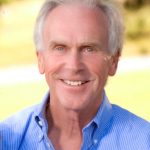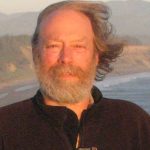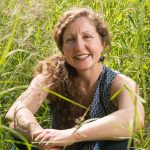Explore the Region

Breathtaking beauty and untouched serenity are only a small part of what makes the Klamath-Siskiyou region so unique.
Teeming with life, the Klamath-Siskiyou is ranked one of the most biologically diverse regions in the world. From the Pacific coast, the rain-soaked coastal redwood forests give way to the rugged Klamath Mountains, which are bordered on the east by the arid foothills of the Rogue and Shasta Valleys. Wild salmon and steelhead spawn in the pristine Wild and Scenic Rivers, while the clear, cold streams provide fresh drinking water for our local communities.
The Klamath-Siskiyou region’s dense mountain forests and beautiful rivers provide a recreational wonderland for generations of families to enjoy and pass on.
The federally-protected Wilderness Areas, National Recreation Areas, National Forests, National Parks, and Wild and Scenic Rivers ensure that this national gem will remain for our future generations to treasure.
Featured Communities in the Klamath-Siskiyou
The Klamath-Siskiyou ecoregion surrounding our communities in southern Oregon and northern California is essential to our quality of life.
This area contains the largest concentration of Wild and Scenic Rivers in the United States, providing us with clean and fresh drinking water. Tourists drawn to the area by its awe-inspiring beauty and world-class recreational opportunities add to the economic vitality of our communities.
Explore the Klamath-Siskiyou and discover what keeps people coming back.
Comments on post-fire logging
Geos Institute provided extensive science comments submitted to the Klamath National Forest on behalf of 15 conservation organizations concerned about massive post-fire logging in spotted owl habitat and adjacent to roadless areas in the world-class Klamath-Siskiyou ecoregion.
Comments on draft Northern California Conservation and Recreation Act (NCCRA)
Congressman Jared Huffman (CA) is drafting legislation to protection wilderness and wild and scenic rivers within the northern California portion of the world-class Klamath-Siskiyou ecoregion. Geos Institute recently commented on the draft requesting changes to the fire management section based on best available science:
- Fire-Mediated Biodiversity Needs to be Recognized as Integral to the Ecological Integrity of the Klamath-Siskiyou Ecoregion
- Provisions Related to “Uncharacteristic Fire” Are Unclear and Need to be based on the Characteristic Fire Regime of the Region
- Protections Should be added to Late-Successional Reserves (and Forests) Before and After Natural Disturbances
- Further Limitations on the Use of Fuel Breaks Along Roads and Plantations Are Needed
- Multiparty Monitoring Requires Funding and Scientific Guidance
Klamath Siskiyou Film
An impressive and beautiful film, capturing the heart of the wild Klamath Siskiyou region. You can watch the entire film below, and also make sure to visit www.ksfilm.org to learn more about the project, the filmmaker, and ways to get involved.
Klamath from Aaron Moffatt on Vimeo.
Cascade-Siskiyou National Monument Expansion Hearing
On October 14, 2016 Senator Jeff Merkely held a public hearing on the proposed expansion of the approximately 62,000 acres Cascade-Siskiyou National Monument, which includes the Pilot Rock area. It was designated by President Clinton in 2000 as the nation’s first monument to biodiversity and contains extraordinary plant and animal diversity. The region is considered a unique biological crossroads for wildlife and plants dispersing across the Cascades, Siskiyous, and Coast Range. It is the nation’s only monument to biodiversity.
Scientists, including Geos Institute, have been calling for expansion of the monument to enable wildlife migrations facing unprecedented climate change and development in the surroundings.
- Read comments in support of expansion submitted to President Obama by Geos Institute Chief Scientist and Forest Legacies Program Director Dominick DellaSala Ph.D.
- Ashland Daily Tidings coverage of the hearing
Geos Institute submits testimony to the Senate to protect globally important Southwest Oregon watersheds
The U.S. Senate held a hearing on Sept. 22 in the Energy and Natural Resources Committee that included legislation introduced by Oregon Senators Ron Wyden and Jeff Merkley to permanently protect some of the nation’s most outstanding landscapes and rivers from destructive mining. Geos Institute’s Chief Scientist, Dr. Dominick DellaSala, submitted testimony in support of this much needed legislation.
Mystic Corridor Tour
From Crater Lake to the Coast
Join us for an online road tour down the Mystic Corridor, between Crater Lake National Park and the Pacific Coast, with its world-class recreation sites and scenic attractions. This tour crosses the northern part of the Klamath-Siskiyou region on highways 62, 234, 99, and 199.
For each stop on this virtual tour, you will find:
- a 2 to 3 minute video about the site and what you can do there
- driving directions and a map
- links to more information and resources
Explore the Klamath-Siskiyou
Breathtaking beauty and untouched serenity are only a small part of what makes the Klamath-Siskiyou region so unique.
Teeming with life, the Klamath-Siskiyou is ranked one of the most biologically diverse regions in the world. From the Pacific coast, the rain-soaked coastal redwood forests give way to the rugged Klamath Mountains, which are bordered on the east by the arid foothills of the Rogue and Shasta Valleys. Wild salmon and steelhead spawn in the pristine Wild and Scenic Rivers, while the clear, cold streams provide fresh drinking water for our local communities.
The Klamath-Siskiyou region’s dense mountain forests and beautiful rivers provide a recreational wonderland for generations of families to enjoy and pass on.
The federally-protected Wilderness Areas, National Recreation Areas, National Forests, National Parks, and Wild and Scenic Rivers ensure that this national gem will remain for our future generations to treasure.
A Wild American Forest
 Academy Award winner Susan Sarandon narrates the remarkable, inspiring story of how a rugged pocket of America’s Pacific Northwest has endured 150 years of logging, mining, and dam-building to remain one of the largest strongholds of old-growth forest in the nation. The beautiful, scenic Klamath-Siskiyou eco-region, straddling the border between California and Oregon, is a wonderland of biodiversity and one of the world’s most important temperate forest regions. The tallest trees on earth grow here, and the greatest concentration of wild and scenic rivers in the nation tumble through the steep terrain. Filmed in more than a dozen wilderness areas and national monuments, A Wild American Forest showcases the Klamath-Siskiyou’s natural splendor and vividly illustrates why this area is recognized as a globally significant bioregion.
Academy Award winner Susan Sarandon narrates the remarkable, inspiring story of how a rugged pocket of America’s Pacific Northwest has endured 150 years of logging, mining, and dam-building to remain one of the largest strongholds of old-growth forest in the nation. The beautiful, scenic Klamath-Siskiyou eco-region, straddling the border between California and Oregon, is a wonderland of biodiversity and one of the world’s most important temperate forest regions. The tallest trees on earth grow here, and the greatest concentration of wild and scenic rivers in the nation tumble through the steep terrain. Filmed in more than a dozen wilderness areas and national monuments, A Wild American Forest showcases the Klamath-Siskiyou’s natural splendor and vividly illustrates why this area is recognized as a globally significant bioregion.
Like the rest of the Pacific Northwest, the Klamath-Siskiyou bears the impact of more than a century of resource extraction. Yet a remarkable set of circumstances–including topography and a landmark court ruling preserving spotted owl habitat–has left the 20,000 square-mile eco-region with more than a third of its old-growth forest intact, a higher percentage than the Pacific Northwest overall. How this happened is explored in the film with the help of those who know it well, from scientists and foresters to an economist, Native Americans, and other local residents. But what will the future bring? Only one-fourth of the area’s old-growth forest enjoys full legal protection, putting the rest of it at risk. Salmon populations are on the brink of collapse here and elsewhere on the Pacific coast. A Wild American Forest reveals how creative solutions to these problems have been set in motion in the Klamath-Siskiyou, setting a precedent for the world.
Watch the first five minutes of A Wild American Forest
Latest News
Stay Updated!
Sign up to stay updated on our current initiatives and receive information you can use to build resilience in your community.

 Samantha Medlock is President of Climate Risk Advisors, helping communities and organizations advance equity, sustainability, and resilience. Her career began chasing floods as a local official in Texas Flash Flood Alley—a hands-on experience that still shapes her approach to climate and disaster risk management.
Samantha Medlock is President of Climate Risk Advisors, helping communities and organizations advance equity, sustainability, and resilience. Her career began chasing floods as a local official in Texas Flash Flood Alley—a hands-on experience that still shapes her approach to climate and disaster risk management.
 Arsum is the Senior Adaptation and Coastal Resilience Specialist for the National Wildlife Federation’s Southcentral Region. In this role, she advances climate adaptation efforts, with a focus on nature-based approaches to address the impacts of climate change and extreme events across the Gulf region. She has authored and co-authored numerous publications on climate impact assessments and adaptation solutions. Additionally, she regularly participates in state-based coastal resilience and hazard mitigation planning across the Gulf, collaborating with regional and local stakeholders.
Arsum is the Senior Adaptation and Coastal Resilience Specialist for the National Wildlife Federation’s Southcentral Region. In this role, she advances climate adaptation efforts, with a focus on nature-based approaches to address the impacts of climate change and extreme events across the Gulf region. She has authored and co-authored numerous publications on climate impact assessments and adaptation solutions. Additionally, she regularly participates in state-based coastal resilience and hazard mitigation planning across the Gulf, collaborating with regional and local stakeholders. Frank is the former President of the Reinsurance Association of America. Frank currently serves on the Advisory Board of the OECD’s International Network for the Financial Management of Large-Scale Disasters, the RAND Center on Catastrophic Risk Management and Compensation, and the University of Cincinnati’s Carl H. Lindner III Center for Insurance and Risk Management Advisory Board.
Frank is the former President of the Reinsurance Association of America. Frank currently serves on the Advisory Board of the OECD’s International Network for the Financial Management of Large-Scale Disasters, the RAND Center on Catastrophic Risk Management and Compensation, and the University of Cincinnati’s Carl H. Lindner III Center for Insurance and Risk Management Advisory Board. Jim is a multilingual world traveler. Based in Bavaria during the 1970s, Jim spent most of this period in India, Afghanistan and Nepal, where he founded and operated a charitable medical clinic serving Tibetan Refugees. He settled in Oregon in 1983 on a forested ranch in the Umpqua National Forest.
Jim is a multilingual world traveler. Based in Bavaria during the 1970s, Jim spent most of this period in India, Afghanistan and Nepal, where he founded and operated a charitable medical clinic serving Tibetan Refugees. He settled in Oregon in 1983 on a forested ranch in the Umpqua National Forest. Dr. Micah Hahn is an Associate Professor of Environmental Health in the Institute for Circumpolar Health Studies at the University of Alaska-Anchorage. She received her joint PhD in Epidemiology / Environment and Resources from the University of Wisconsin-Madison and her MPH in Global Environmental Health from Emory University. Subsequently, she was a postdoctoral fellow for the CDC Climate and Health Program, and in this position worked collaboratively with the CDC Division of Vector-borne Diseases and the National Center for Atmospheric Research. Her research focuses on understanding the health impacts of climate change and working with communities to develop locally-relevant adaptation and resilience-building strategies. Dr. Hahn is also on the Management Team of the Alaska Climate Adaptation Science Center.
Dr. Micah Hahn is an Associate Professor of Environmental Health in the Institute for Circumpolar Health Studies at the University of Alaska-Anchorage. She received her joint PhD in Epidemiology / Environment and Resources from the University of Wisconsin-Madison and her MPH in Global Environmental Health from Emory University. Subsequently, she was a postdoctoral fellow for the CDC Climate and Health Program, and in this position worked collaboratively with the CDC Division of Vector-borne Diseases and the National Center for Atmospheric Research. Her research focuses on understanding the health impacts of climate change and working with communities to develop locally-relevant adaptation and resilience-building strategies. Dr. Hahn is also on the Management Team of the Alaska Climate Adaptation Science Center. Michael is a former Founding Principal of Resilient Cities Catalyst, a global non-profit helping cities and their partners tackle their toughest challenges. He is currently the Executive Director of Climate Resilience Academy at the University of Miami.
Michael is a former Founding Principal of Resilient Cities Catalyst, a global non-profit helping cities and their partners tackle their toughest challenges. He is currently the Executive Director of Climate Resilience Academy at the University of Miami. Dr. Quintus Jett is a consultant, educator, and strategist for public causes. He has a doctorate in Organizations & Management from Stanford University, and a two-decade faculty career which spans schools, departments, and programs of business, engineering, liberal studies, divinity, and public and nonprofit management. Following Hurricane Katrina in 2005, Dr. Jett launched a volunteer project in New Orleans, which enlisted residents, students from over a dozen colleges and universities, and hundreds of others to field map the city’s Gentilly district, Lower Ninth Ward, and New Orleans East. Dr. Jett is an innovator in higher education, bridging the divide between academic research and the other priorities of the modern university, including student access and diversity, community engagement, and providing foundations for life-long learning in today’s rapidly changing world.
Dr. Quintus Jett is a consultant, educator, and strategist for public causes. He has a doctorate in Organizations & Management from Stanford University, and a two-decade faculty career which spans schools, departments, and programs of business, engineering, liberal studies, divinity, and public and nonprofit management. Following Hurricane Katrina in 2005, Dr. Jett launched a volunteer project in New Orleans, which enlisted residents, students from over a dozen colleges and universities, and hundreds of others to field map the city’s Gentilly district, Lower Ninth Ward, and New Orleans East. Dr. Jett is an innovator in higher education, bridging the divide between academic research and the other priorities of the modern university, including student access and diversity, community engagement, and providing foundations for life-long learning in today’s rapidly changing world. Scott is Monfort Professor of Atmospheric Science at Colorado State University. He has written about 100 publications in the peer-reviewed climate literature, is a former editor of the Journal of Climate, and served for five years as founding Science Chair of the North American Carbon Program.
Scott is Monfort Professor of Atmospheric Science at Colorado State University. He has written about 100 publications in the peer-reviewed climate literature, is a former editor of the Journal of Climate, and served for five years as founding Science Chair of the North American Carbon Program. Linda has many years of experience in disaster preparedness and resilience. She has been an elected official on the Linn County Iowa Board of Supervisors, Chair of the Metropolitan Planning Organization, the East Central Iowa Council of Governments, the statewide Mental Health Developmental Disability and the Linn County Board of Health. Langston is a former president of the National Association of Counties (2013-2014).
Linda has many years of experience in disaster preparedness and resilience. She has been an elected official on the Linn County Iowa Board of Supervisors, Chair of the Metropolitan Planning Organization, the East Central Iowa Council of Governments, the statewide Mental Health Developmental Disability and the Linn County Board of Health. Langston is a former president of the National Association of Counties (2013-2014). Ken works with families and organizations as a mediator, organizational consultant, trainer and facilitator. Along with his passion for helping people prepare for and reduce climate change, Ken also volunteers as a mediator through Mediation Works and is passionate about supporting youth through mentoring with Boys to Men of Southern Oregon.
Ken works with families and organizations as a mediator, organizational consultant, trainer and facilitator. Along with his passion for helping people prepare for and reduce climate change, Ken also volunteers as a mediator through Mediation Works and is passionate about supporting youth through mentoring with Boys to Men of Southern Oregon. Matthew is a retired high school teacher who was once honored as Oregon High School Social Studies Teacher of the Year. Before his teaching career he was in the restaurant business in Portland. He is also a lawyer who has been a member of the Oregon State Bar Association since 1980.
Matthew is a retired high school teacher who was once honored as Oregon High School Social Studies Teacher of the Year. Before his teaching career he was in the restaurant business in Portland. He is also a lawyer who has been a member of the Oregon State Bar Association since 1980. Andrea is the Resilience Policy Advisor for the North Carolina Office of Recovery and Resiliency. She works across state agencies and with local governments to increase the state’s resilience to the impacts of climate change.
Andrea is the Resilience Policy Advisor for the North Carolina Office of Recovery and Resiliency. She works across state agencies and with local governments to increase the state’s resilience to the impacts of climate change.